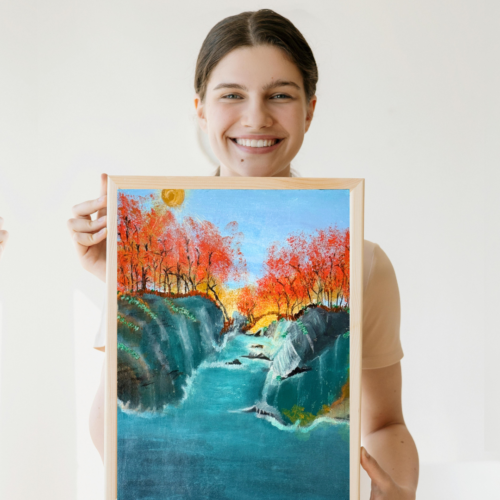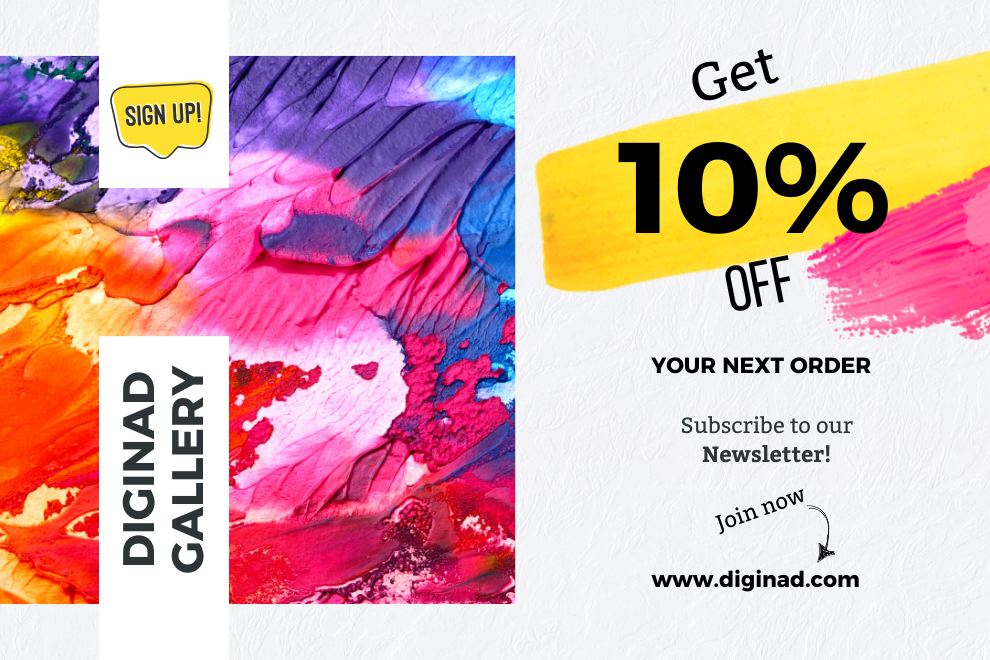Top 10 Digital Art Trends for 2025

The digital art world is evolving faster than ever
The digital art world is evolving faster than ever, blending technology and creativity in groundbreaking ways. As we step into 2025, artists, collectors, and enthusiasts are embracing new trends that push artistic boundaries. Whether you’re an artist looking to innovate or a buyer seeking fresh, cutting-edge artworks, staying updated on the latest trends is essential. Here are the top 10 digital art trends for 2025 that are shaping the industry.
1. AI-Generated Art
Artificial Intelligence (AI) is revolutionizing digital art, with platforms like MidJourney, DALL·E, and Deep Dream creating intricate visuals from text prompts. Artists are using AI not just as a tool but as a collaborator, generating unique compositions that merge human creativity with machine learning. AI-generated art is expected to grow in popularity as more creators experiment with its limitless possibilities.
2. 3D Animation and Motion Art
With advancements in software like Blender, Cinema 4D, and Unreal Engine, 3D animation is becoming a dominant trend. Motion art, particularly in the NFT space, is gaining traction as collectors seek dynamic digital experiences. Expect more hyper-realistic renders, surreal animations, and immersive storytelling through 3D visuals in 2025.
3. Immersive AR & VR Art
Augmented Reality (AR) and Virtual Reality (VR) are redefining how people experience art. Interactive digital galleries, AR-powered street art, and VR exhibitions are becoming more common, allowing viewers to engage with art in new dimensions. Platforms like Meta’s Horizon Worlds and AR tools in mobile devices are making this trend more accessible to creators and audiences alike.
4. Generative Design
Generative art uses algorithms and code to create stunning visuals that often evolve in real time. Artists use programming languages like Processing, p5.js, and TouchDesigner to craft intricate, unpredictable designs. This trend is gaining popularity in digital collectibles, interactive installations, and AI-driven creative processes.
5. Glitch and Cyberpunk Aesthetics
With the rise of futuristic and dystopian themes in pop culture, glitch art and cyberpunk aesthetics are making a comeback. This style embraces distortion, pixelation, and neon-lit landscapes, reflecting the intersection of technology and human expression. Expect more artists to experiment with this aesthetic in 2025, offering visually striking pieces that challenge digital perfection.
6. Hyperreal Digital Portraits
Advancements in digital painting software like Procreate and Photoshop have enabled artists to create hyperrealistic digital portraits with meticulous detail. Whether it’s celebrity illustrations, fantasy characters, or cultural depictions, hyperreal digital portraits are captivating audiences with their lifelike quality and emotional depth.
7. Textured and Mixed Media Digital Art
Artists are blending digital tools with traditional textures like watercolor, oil paint, and collage to create unique hybrid artworks. This fusion of old and new techniques adds depth and authenticity to digital pieces, attracting buyers who appreciate handmade aesthetics in a digital format.
8. Interactive and Dynamic Artworks
Interactivity is shaping the future of digital art. Whether through touch-sensitive screens, motion tracking, or AI-driven personalization, art is becoming more engaging than ever. Collectors are drawn to digital pieces that change based on viewer interaction, making each experience unique.
9. Eco-Friendly and Sustainable Art
With growing concerns about the environmental impact of digital art (especially NFTs), artists are exploring eco-friendly solutions. Blockchain platforms are adopting greener technologies, and artists are focusing on sustainable digital practices. This trend is crucial in making digital art more responsible and future-proof.
10. Cultural and Socially Conscious Digital Art
Artists are increasingly using digital mediums to reflect cultural heritage, social movements, and global issues. In Pakistan, digital artists are preserving traditional art forms while infusing them with modern aesthetics. Platforms like DIGINAD provide a space for these artists to showcase their work, bridging cultural narratives with global audiences.
Conclusion
Digital art in 2025 is more innovative and diverse than ever. From AI-generated masterpieces to immersive VR experiences, the future of digital creativity is limitless. Whether you’re an artist or a collector, embracing these trends will keep you ahead in the ever-evolving world of digital art. At DIGINAD, we celebrate these advancements by offering a marketplace where Pakistani artists can showcase their talent to a global audience. Explore, create, and invest in the future of digital art today!
As the digital art industry evolves, new trends emerge. AI-generated art, immersive VR/AR experiences, 3D digital sculptures, and generative design are some of the biggest trends shaping the industry. This blog will explore how artists can leverage these trends to stay ahead.
Stay tuned to DIGINAD for more insights into the digital art world, and don't forget to follow us for the latest updates!
#digitalart #diginad #art #artist









